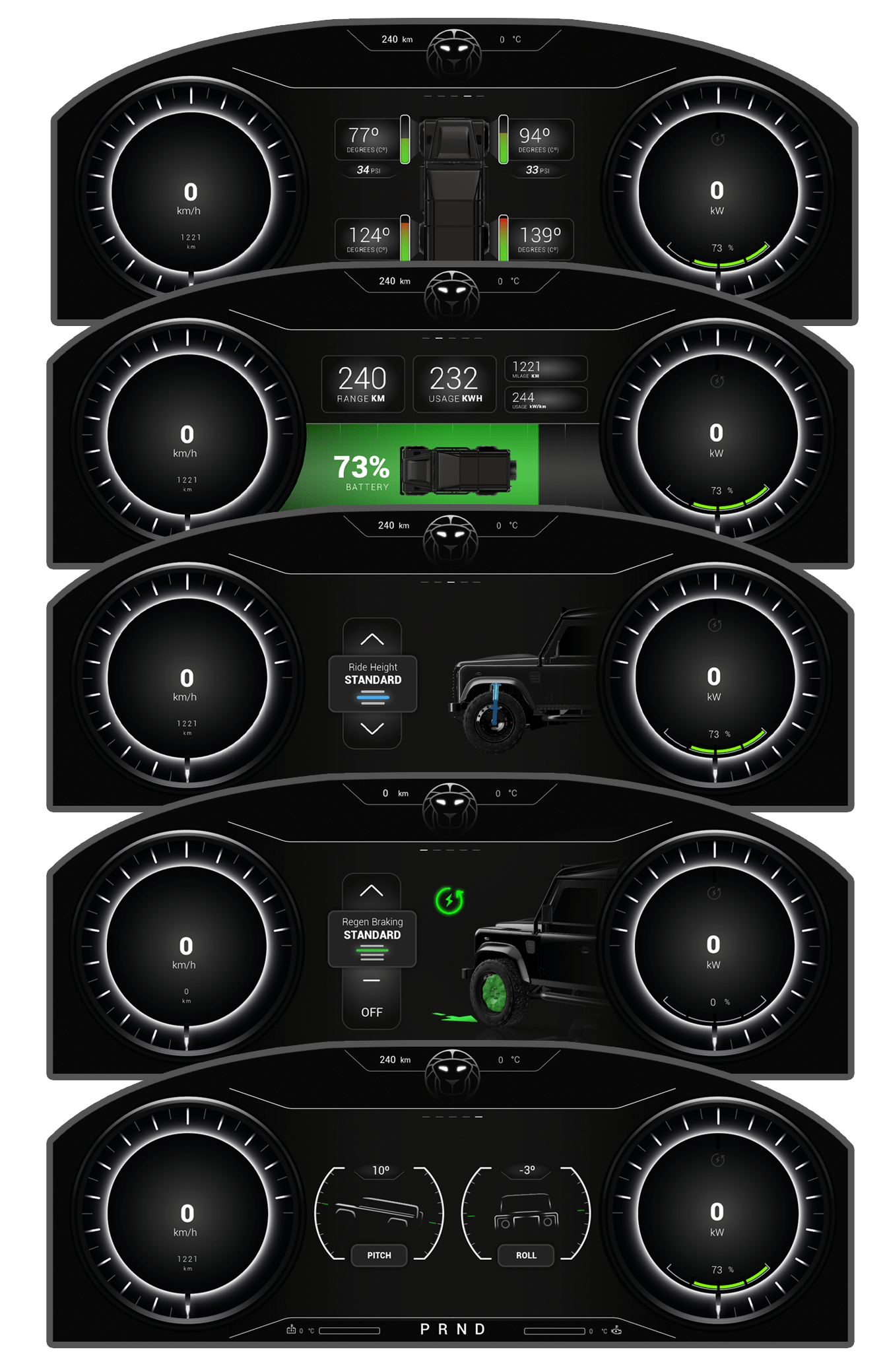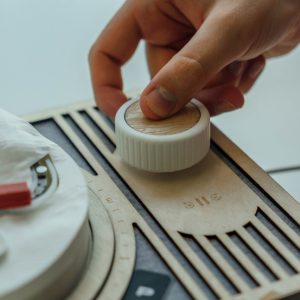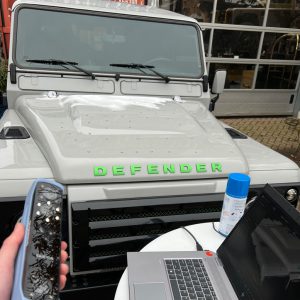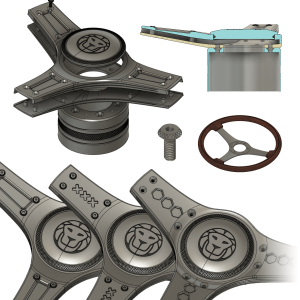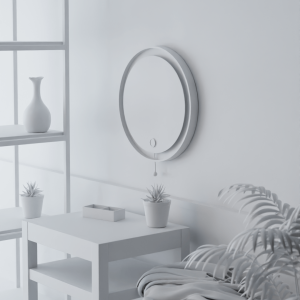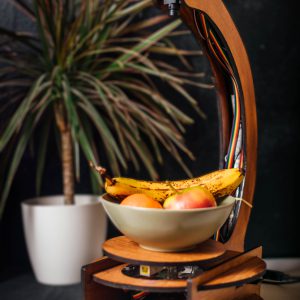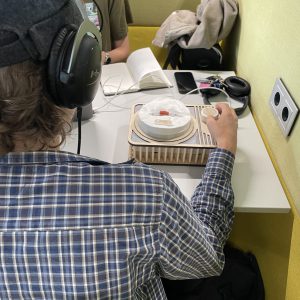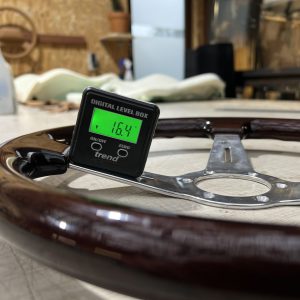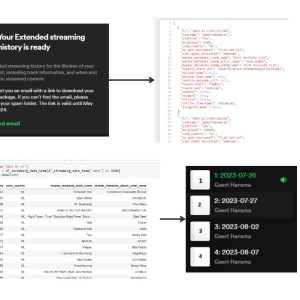Present
My development in expertise areas
Development of expertise areas






1. Creativity & Aesthetics
Great design transcends functionality; it ignites emotions and crafts captivating experiences. This is where my expertise in creativity and aesthetics shines. It fosters the ability to break free from convention, generating innovative ideas through exploration, iteration, and critical evaluation. It is about striking a balance between intuition and knowledge, ensuring designs are visually engaging and user centered.
My study developed this expertise. I honed my skills in visualizing design ideas through programs like Adobe Photoshop and Illustrator, allowing me to create detailed assets for user interfaces and effectively communicate my concepts. Moreover, I possess a critical eye for aesthetics, analysing form, interaction, and overall design quality to strike a balance between visual appeal and functionality.
Inspiration fuels my creative process. I draw upon existing works, combining them with my own perspective to refine and strengthen my concepts. This approach was evident during my internship at The Landrovers, where I used Adobe software to create a custom instrument cluster for an electric Defender. The design, maintaining the brand identity, incorporated interactive UI elements controlled through Crank software.
Pushing interaction design boundaries excites me. My final bachelor project (FBP) exemplifies this. I transformed intangible data into an interactive experience, utilizing familiar media knob interactions alongside a speculative one using the car play head. This showcases my ability to draw inspiration from existing products and combine them into innovative concepts.
A prototype’s value extends beyond technical functionality. For me, aesthetics convey professionalism. My FBP prototype exemplifies this with its use of Perspex wood, felt accents, and speaker texture details, all aimed at elevating the user experience. An area I want to improve is my skills in sketching on paper. Currently, this is lacking and I often struggle to quickly convey my ideas that are in my head on paper.
My expertise in creativity and aesthetics empowers me to generate innovative ideas, translate them into visually appealing and user-centered designs, and present them through professional prototypes. This allows me to trust my senses and intuition: I understand the importance of intuition in the design process, balancing it with a solid foundation in design knowledge.

2. Technology & Realization
Design is about translating innovative ideas into tangible experiences, and prototypes makes that experienceable. This is where my expertise in technology & realization comes into play. My skills that I developed in this area allows me to express my innovative concepts into prototypes that can be experienced using the right technologies. Throughout my study, I have developed this skillset, transforming it into a toolbox that empowers me to bring my design concepts to life. My internship served as a valuable platform to develop these tools further, allowing me to put theory into practice and expand my skills in this area. Each skill I have learned in technology & realization is like a tool in this toolbox. This expertise has been put to practice in my final bachelor project (FBP) where I successfully built a prototype that effectively conveyed my design concept as a fully interactive experience.
In project 1 & 2 played a big part in my interest in 3D modelling. I started to learn the program Blender, which allowed me to visualize my ideas in 3D space and render them in a realistic setting to make design decisions. The course ‘Creative mech. desi/engi/manu’ took this a step further introducing me to Fusion 360 and 3D printing. I use Fusion 360 for modelling and Blender for visualization. During my internship I developed these skills further, learning a lot about how to use Fusion 360 but also new tools like resin printing for rapid prototyping/testing 3D models and 3D scanning for translating the real world into a CAD program. These tools helped me create a custom aluminium/wooden steering wheel for four custom Land Rover Defenders. I was involved from beginning to finish, designing the model and providing technical drawings for the manufacturer to make it a reality. Furthermore, I am able to use these 3D models in my UI/X designs for custom Human Machine interfaces (HMI). For an electric converted Land Rover Defender, I designed a custom interface utilizing my skills in Adobe Photoshop and Illustrator together with 3D models from Fusion 360. I was able to bring these assets to life in a relatively unknown program called Crank, a program that allows for embedded GUI’s making the car’s ECU data to be translated into an interactive interface.
During my FBP I implemented these skills I learned during my study and internship to make a prototype that can be experienced. My prototype was designed in Fusion 360 and translated onto technical drawings to be able to be laser cut out of MDF/Perspex or 3D printed. To make it experienceable I used my skills in UI/X design to allow for interaction with the prototype via Processing and Arduino. The FBP is a combination of all my skills that I developed during my study and I want to further develop these skills to be able to create highly detailed interfaces in the future.

3. User & Society
Design is not just about aesthetics or functionality; it’s about creating value for the people who will use it. This is where my user-centered approach comes into play. I believe that rigorously testing prototypes with users is essential. User data is not just informative, it is transformative. Witnessing firsthand how users interact with my designs reveals unexpected behaviours and unveils opportunities for improvement. It is a humbling experience, as it exposes blind spots created by my familiarity with the design process. Each user interaction, expected or surprising, offers valuable insights that guide my design decisions. This iterative approach, grounded in empathy, ensures that my designs not only function well but also resonate with users on a deeper level.
A project that helped me understand the power of user data is Project 3, where I researched the effect of automated fruit delivery. To get enough user data, we made four identical prototypes. With this we could generate a lot of quantified data diversified over more users. I learned that a prototype is not always about the end-result but can be used as a probe to evaluate concepts and ground them with data. This method is great to be able to conduct informed user interviews that utilize data that has been generated through a prototype.
My FBP prototype Road Echoes further emphasizes the importance of user testing. An initial exploratory user test provided qualitative data to understand connections between music and location data, informing initial design decisions. When the completed prototype was tested again with the same participants, it revealed both strengths, like reminisce through music and location data, and areas for improvement, particularly interaction design intuitiveness. While time constraints limited implementing all feedback, this experience underlines the importance of allocating enough time for user testing throughout the design cycle. Recognizing the limitations of completing a fully functional prototype before user testing, I want to learn to create more basic prototypes that can deliver a core user experience earlier in the process. This shift allows for earlier and more frequent user feedback, leading to a more refined final product.
Design goes beyond aesthetics and functionality; it should create value for users. User-centered design is important in the design process. User testing, like in Project 3 and my FBP (Road Echoes), unlocked valuable insights and new iterations. Recognizing time constraints, I want to explore lower-fidelity prototypes for earlier user feedback for new projects.

4. Math, Data & Computing
While aesthetics and functionality are important, great design thrives on data-driven insights. My final bachelor project (FBP), Road Echoes, exemplifies this philosophy. Here, I leveraged my math, data, and computing skills to transform intangible user data into a tangible and interactive experience.
I began by collecting my Spotify user history data. Using Jupyter Notebook, I transformed this raw data into usable, time-coded information. This processed data provided valuable insights for user testing and shaped the final prototype experience.
Understanding the limitations of my coding proficiency, I utilized ChatGPT to supplement my coding skills. This AI tool enabled me to create the desired user interaction experience within my FBP prototype, bridging the gap between my design vision and the technical implementation. In Processing, I combined assets created in Photoshop to design an interactive ordering process. Users interacted with their data, selecting songs for a location-based disc. This user selection then communicated with the Arduino to play the chosen music.
For an Industrial Designer, math can be a daily task. During my internship, I am constantly applying math when designing the steering wheel. This design incorporated an existing frame as its core, with a custom shell designed around it. Accurate measurements, utilizing a calliper and a protractor, were really useful in this process. Translating these 2D measurements into a precise 3D model in Fusion 360 required careful calculations to replicate the real-life object accurately.
My experience with Road Echoes highlights the power of data and computation in design. It also emphasizes the value of leveraging tools like ChatGPT to bridge the gap between design vision and technical execution. As I move forward, I am committed to continuously developing these skills, further enabling me to create data-driven designs that bridge the gap between the digital and physical worlds.

5. Business & Entrepreneurship
My internship at The Landrovers provided invaluable insights into how design translates into commercially viable products. Witnessing firsthand the expertise of industrial designers within a company focused on speed and results was a formative experience.
The internship offered a compelling contrast to academic design projects. While both share a focus on creativity, Land Rover emphasized the importance of market analysis and business considerations throughout the design process. This included being accountable for projects like the steering wheel and classic EV HMI, ensuring they not only met design goals but also aligned with production feasibility and market needs.
While I actively sought to learn frameworks like Business Model Canvas and PESTEL analysis through electives like “Design Management” and “Introduction to Business Design,” I found these tools did not naturally integrate into my design process.
However, the internship experience itself proved to be a powerful business education. Taking sole ownership of projects, from conception to potential implementation in a customer’s car, revealed the crucial connection between design and business success. The Landrovers results-oriented approach instilled in me the importance of balancing creative vision with real-world considerations, ensuring designs not only serve the user but also contribute to the company’s bottom line.
This understanding of design’s role within a larger business context positions me to effectively collaborate with cross-functional teams and translate design solutions into commercially successful products. While theoretical frameworks may not be my primary design tool, the lessons learned at the Landrovers serve as a foundation for creating meaningful product-service systems that generate value for users and the business.
